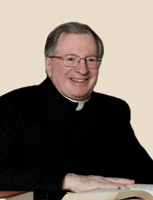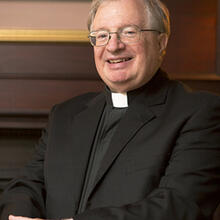In 1996-97 the international community was picking up the pieces after the wars of secession in the former Yugoslavia. The hardest problems were to be found in Bosnia-Herzegovina, the small, internally divided republic shared by Muslim Bosniaks, Catholic Croats and Orthodox Serbs. Richard Schifter, a senior adviser in the Clinton White House, called together a group of Washington-based religious representatives to explore how physical reconstruction could be used to support ethnic and religious reconciliation.
His illustration was a rebuilding program in which Bosniak homes might be rebuilt by Croat carpenters with building supplies purchased from Serbian lumber yards.
To Daniel Philpott and Gerard F. Powers, editors of Strategies of Peace: Transforming Conflict in a Violent World (Oxford), Ambassador Shifter’s proposal would count as an early example of strategic peacebuilding, integrating two previously distinct activities in the interest of establishing a more stable and enduring peace. Philpott and Powers propose that peacemakers in a variety of fields carry out their work within a broader vision of the requirements of peace. As Philpott helpfully explains, in practice the title means making “wider and deeper” inquiry into the challenges a particular peacemaking effort faces.
In much the same way as the military has discovered that civil-political relations, policing and development specialists are required to wage a successful counterinsurgency campaign, so too have peacemakers refined their strategies. In the view of the two Notre Dame peace experts, peacemakers whether at home or in the field need to probe the edges of their specialized activities and make connections with other programs and professionals. This is a change from recent practice, in which peacemaking activities have only occasionally been consciously integrated.
Not all connections, whether between subfields or experts, come easily. The best-known tension among peacemakers, as the book points out, may be found between the proponents of “transitional justice,” who argue for prosecution for human rights violations and war crimes, and those intent on advancing the steps needed for a sustainable peace, such as amnesty or intergroup reconciliation, that may prohibit or delay punishment.
International lawyers and human rights advocates are often adamant that those who violated the peace need to be punished, whereas professionals in conflict resolution are willing to accept amnesties or truth and reconciliation commissions, even though they entail foregoing, at least for a time, punishment of offenders.
One of the notable contributions of this book is to highlight less examined fields like religious peacebuilding. The co-editors’ own contributions are especially strong in this regard. Philpott’s “Reconciliation: An Ethic for Peacebuilding” is a model of exact yet accessible interdisciplinary thinking on one of the promising peacemaking sub-specialties. Powers’s “Religion and Peacemaking” examines the engagement of organized religion in peacebuilding, a valuable resource in religio-ethnic conflicts and in failed states, where organized religion is often the only viable institution.
My one regret is that in the whole book there is no adequate treatment of nonviolence. Powers’s short discussion of the topic spends more ink on the just war, where his own interest lies, than on nonviolence, a movement that remains central to religious peacemaking. He concludes, “More Mahatma Gandhis are always necessary, but even more needed are more Reinhold Niebuhrs.”
I would have put it the other way round. But read and decide for yourself.









There is a wealth of resources available here including description of faculty research (first-rate), web resources, and even syllabi for the courses with some of the books and readings available for free as large HTML files.
The description of the tension between human-rights and war tribunals versus those working for amnesty and reconciliation seems pivotal and worthy of much, much more study and discussion.
Perhaps the work of George Marshall in rebuilding Europe after World War II could offer suggestions on how to involve the armed services in the constructive rebuilding and restoration of countries decimated by war. Marshall was rewarded the Nobel Peace Prize in 1953-the only Army General in U.S. History to attain this honor-and his work after WW II bridged the huge disconnect traditionally seen between the military and rebuilding/reconciling forces.
Thank you, Father Drew, for bringing this book to our attention.